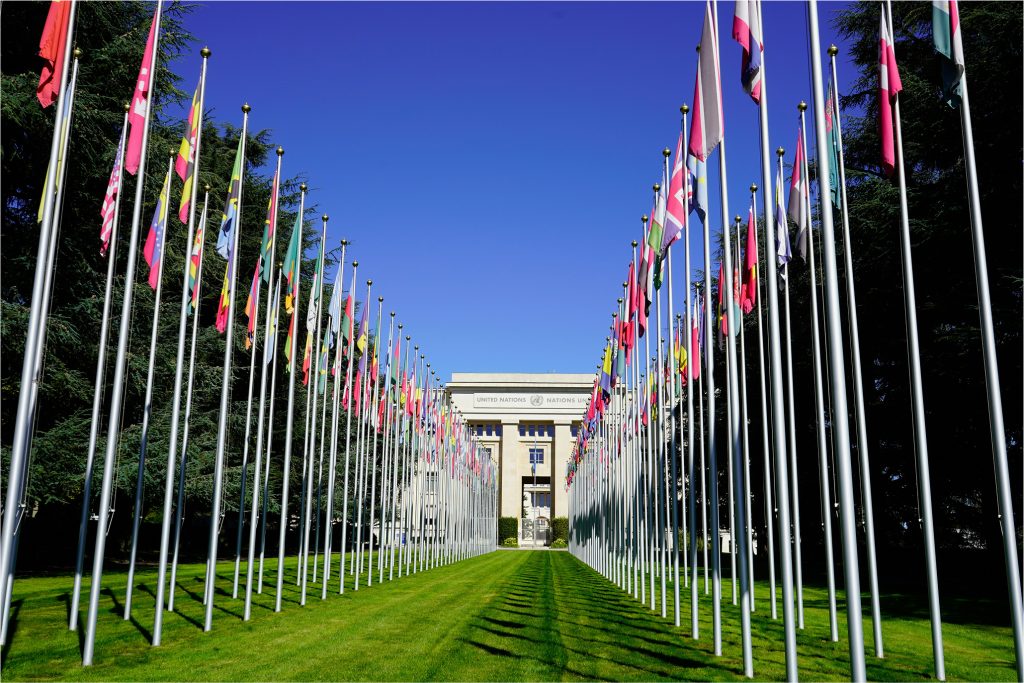
Section 6.2
Protect Biotechnology with U.S. Allies and Partners
Chapter 06
Section 6.2
6.2A
Congress should direct the Department of State (DOS), along with the NIST, to support the development of international norms and standards, including defining shared values and interests in biotechnology.
6.2B
Congress should require the Department of State (DOS) to create a strategy for harmonizing multilateral export controls.
At the same time as it promotes biotechnologies with its allies and partners, the U.S. government must coordinate efforts with them to protect biotechnology from misuse by adversaries and prevent it from causing unanticipated harm. The U.S. government should work with allies and partners to standardize approaches toward adversarial capital (see Section 2.5), country-wide export controls (see Section 3.3), and data security (see Section 4.2) to ensure that U.S. and allied technologies are not misused by adversaries. These efforts should also include ensuring that international norms and standards are rooted in safety, security, and responsibility.
Recommendation
6.2A
Recommendation 6.2A
Congress should direct the Department of State (DOS), along with the National Institute of Standards and Technology (NIST), to support the development of international norms and standards, including defining shared values and interests in biotechnology.
U.S. participation in standards setting bodies, like the International Organization for Standardization (ISO), has remained flat over the past two decades. Meanwhile, China’s participation in such bodies has ballooned. China participates in 200 more ISO technical committees that work to set international standards, compared to the United States.310
The international community is increasingly converging on a common set of biotechnology standards. Active and engaged U.S. leadership in these forums will be critical to ensuring that American interests are fully represented as global standards are set. Allowing China to dominate the conversation diminishes both the United States’ biotechnology industry and its own national security. The ISO, for example, has already published a variety of biotechnology standards covering topics ranging from cleanrooms to biobanking to DNA sequencing.311
While the United States has a voice in these forums, the limited size of its delegations constrains its effectiveness. The DOS, along with the NIST and other agencies, should work with affected stakeholders in industry and academia to foster greater U.S. engagement and leadership in these forums. The DOS should further ensure that these activities are coordinated with interagency partners, including trade agencies and agencies with a role in biosafety and biosecurity (see Section 4.4a).
Recommendation
6.2B
Recommendation 6.2B
Congress should require the Department of State (DOS) to create a strategy for harmonizing multilateral export controls.
The United States should also work with its allies and partners to protect against biotechnology misuse by harmonizing multilateral export controls. Currently, however, emerging technologies evolve faster than countries can harmonize multilateral export controls, a process that can take years. This dynamic is compounded by other long-standing problems with existing multilateral export control regimes.
For example, the Wassenaar Arrangement on Export Controls for Conventional Arms and Dual-Use Goods and Technologies includes Russia and operates by consensus and, as a result, has made only minor updates to its control lists in recent years.312 Without harmonization, countries can differ on what biotechnology-related equipment they restrict. The lack of a unified monitoring system allows adversaries to shop around and buy technology from countries with more lax restrictions.
Export controls often lag behind both technological advances and geopolitical changes. Without a forcing mechanism to continuously update them, the United States and its allies will find that biotechnology-related equipment restrictions become less relevant and therefore less effective over time.
Within the next year, the DOS should develop a new strategy for harmonizing multilateral export controls on conventional arms and dual-use goods and technologies. This strategy should lay out how export controls can reflect contemporary geopolitical and technological dynamics, such as overcoming the limitations in the Wassenaar regime. Working with the National Security Council, relevant agencies, and key allies and partners, the DOS should report to Congress on the new strategy and a plan for implementing it.